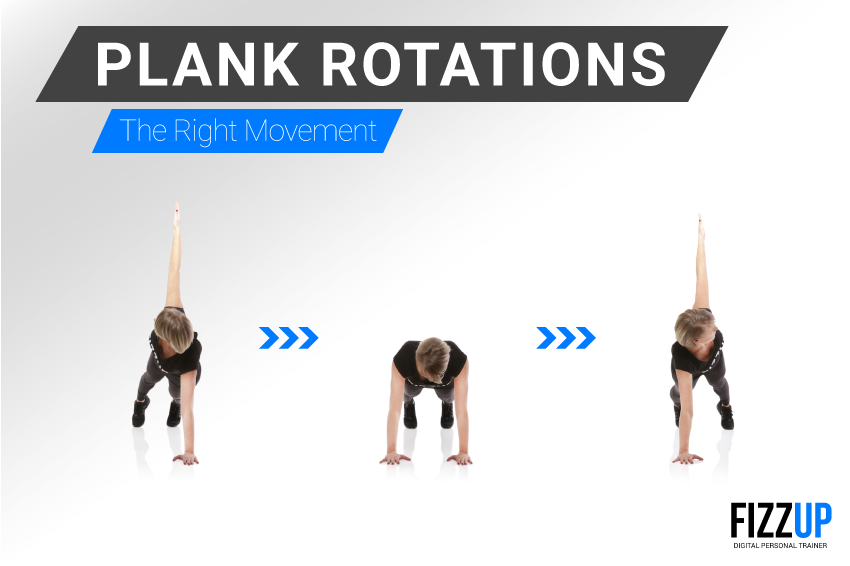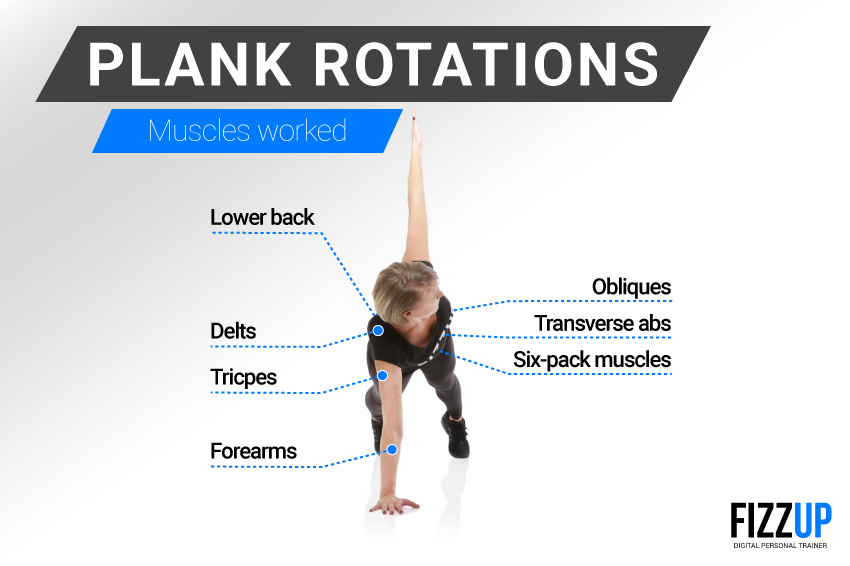“All for one, and one for all!” Every joint, every tendon, every organ and every muscle are a part of a whole: your body. It’s vital for you to remember that it’s not enough to target only certain muscles when exercising. You need to work all your muscles in a balanced way while still maintaining a unity between each of your muscle groups. Core strengthening exercises, also called stability exercises, is a good way to achieve this and create an efficient “bridge of strength” between the upper and lower body.
What are planks ?
Planks strengthen your core muscles and develop your stability axis through the line of your head, spine and hips. From childhood and all throughout your development, your motor skills have improved along this axis. A baby starts by controlling its head, then gains stability around each vertebra and finally succeeds in moving all of its limbs. As you grow, your body needs to develop more stability around this axis. You can use planks as an efficient way to develop your stability. There are two ways to strengthen your core:
- Static planks, which help you improve and maintain your posture and also work your core muscles in an isometric (static) contraction.
- Dynamic planks, which involve movement and work on both your mobility and joint stability.
To best illustrate the benefits of planks, below is a detailed description of how to do a dynamic plank that’s both effective and unique: the plank rotation.

How to do a perfect and effective plank rotation
Like any dynamic plank, the plank rotation requires you to maintain good posture as you do the exercise. In order to do it effectively and avoid any discomfort, this exercise requires concentration, coordination and, of course, knowing how to do the movement correctly. Here’s how to do the perfect plank rotation:
- Starting position: Get into a push-up position with your arms straight and shoulder-width apart. Keep your back straight.
- Step 1: Rotate your chest while lifting one arm. Stop the movement once both arms form a straight line, creating a “T” with your body.
- Step 2: Return to the starting position and continue by doing the same movement on the other side.
Three key tips from the FizzUp trainer
- Keep your body straight. Your head, spine and hips should form a perfectly straight line.
- Focus on the quality of your posture and your movement rather than how fast you can do each rep.
- Your head should follow the movement. Look in the direction of the hand you’re raising.
Which muscles does a plank rotation work?
Because it’s a dynamic plank, the plank rotation improves joint stability and works many of the muscles in your body, such as your core muscles and abs.
- Transverse abdominis: This is the deepest abdominal muscle and is essential for maintaining your intestines, stability and the energy your body releases. When developed, this muscle is what gives you a flat stomach.
- Rectus abdominis: This superficial abdominal muscle is the core’s most important flexor muscle. It’s separated and crossed by tendons, giving you that six-pack effect sought after by men. The plank rotation works the rectus abdominis but to a lesser extent than the other abdominal muscles.
- Obliques: These are the muscles that make up the lateral part of the abs.
- Lower back muscles: Like any other plank exercise, the plank rotation targets the lower back muscles which are a part of the paraspinal muscles and are situated on each side of the spine.
- Arm muscles: This movement also works the delts, triceps and forearm muscles in an isometric contraction.
Plank variations as full-body core strengthening exercises
The benefit of the plank lies in its variety and ability to be modified into a multitude of strength training exercises. Here are some of the variations that allow you to also strengthen your abs and lower back and to improve your posture.
Static plank exercises: You don’t need to hold the position for more than 30 seconds with this type of exercise. Holding them for 10 to 30 seconds is the best way to develop your stabilization endurance. Here are two examples of static planks:
- Forearm plank: Lying face-down, lift yourself up onto your forearms with your elbows under the shoulders. Extend your legs, come up onto your toes and lift your hips as you align your head, chest, hips and legs. Hold this position. Make sure you breathe normally without stifling your breath. If the exercise is too difficult, try it on your knees.
- Reverse plank: Start by sitting on the floor with your legs straight and your hands placed behind you. With your palms on the floor and under your shoulders, point your fingers towards your feet or away from you. Raise your buttocks to come up onto your heels and hands. Your head, spine and hips should be perfectly aligned. Hold this position. Be sure to breathe normally.
Dynamic plank exercises: This type of plank not only improves your stability but also increases flexibility and joint mobility. Here are two examples of dynamic planks:
- Plank with leg lift: Lying face-down, lift yourself up onto your forearms with your elbows under the shoulders. Extend your legs, come up onto your toes and lift your hips as you align your head, chest, hips and legs. Lift one leg up behind you and place it back on the floor. Repeat on the other side. Try to keep your back straight during the entire exercise.
- Thigh-touch plank: This position is the same as the plank with leg lift. The only difference is that you touch your outer thighs with your hands. Complete the movement with the left hand then return to the starting position. Repeat with the right hand.
What are the benefits of planks?

Unfortunately, every day your joint stability and everything you’ve learned about improving it is put at risk. Most often, you sit 80% of the time you’re awake if you have an office job. Repetitive movements from work and the trauma you suffer over time can negatively alter your postural and muscle balance. Through plank exercises, such as the plank rotation, you’ll be able to fix the imbalances caused by your daily life. Here are the many advantages of an effective plank workout that right for your fitness level:
- Better joint stability and increased ability to maintain a posture that’s good for your body, which improves your overall health over the long term by limiting back and joint pain, for example.
- Stronger abs, which make your daily movements more efficient and less difficult. As for athletic performance, proper planks increase strength and explosiveness, while allowing for better transfer of strength between the upper and lower body.
- More flexibility and better joint mobility, thanks to a dynamic workout.
- A sculpted physique: When correctly doing a plank both dynamically and statically, you’ll quickly develop a balanced and coordinated musculature. In other words, whether you want a flat stomach or well sculpted abs, the plank is for you.
With more than 200 strength training exercises, you’ll get a variety of full-body workouts with the FizzUp fitness training program. You’ll find exercises like push-ups or pull-ups for your strength and muscular endurance, burpees for your cardiovascular endurance and agility, or the Arlaud movement and the bear squat for building muscle. With FizzUp, you’ll develop a balanced and functional musculature and improve your physical abilities to make your daily life easier.

